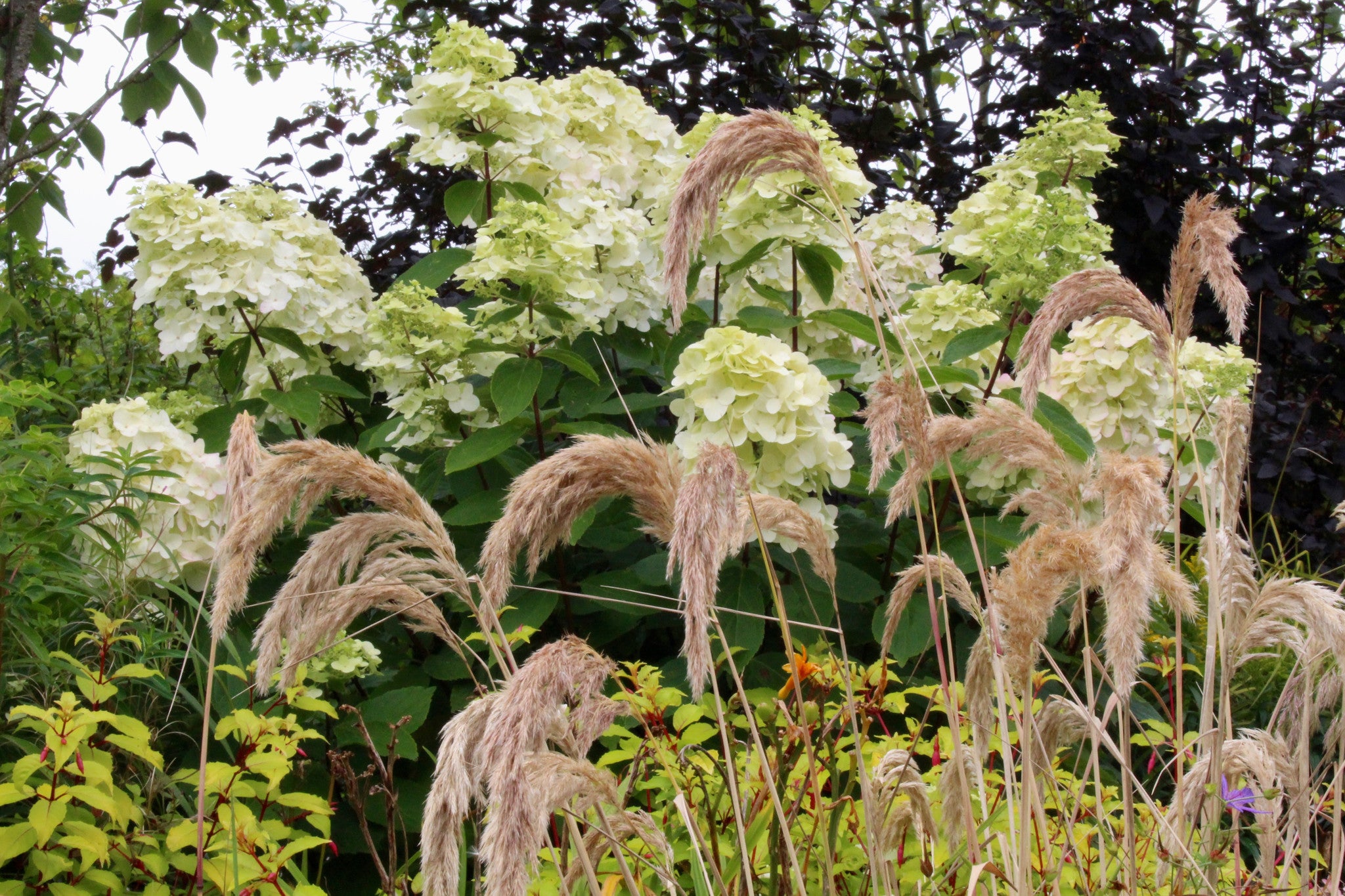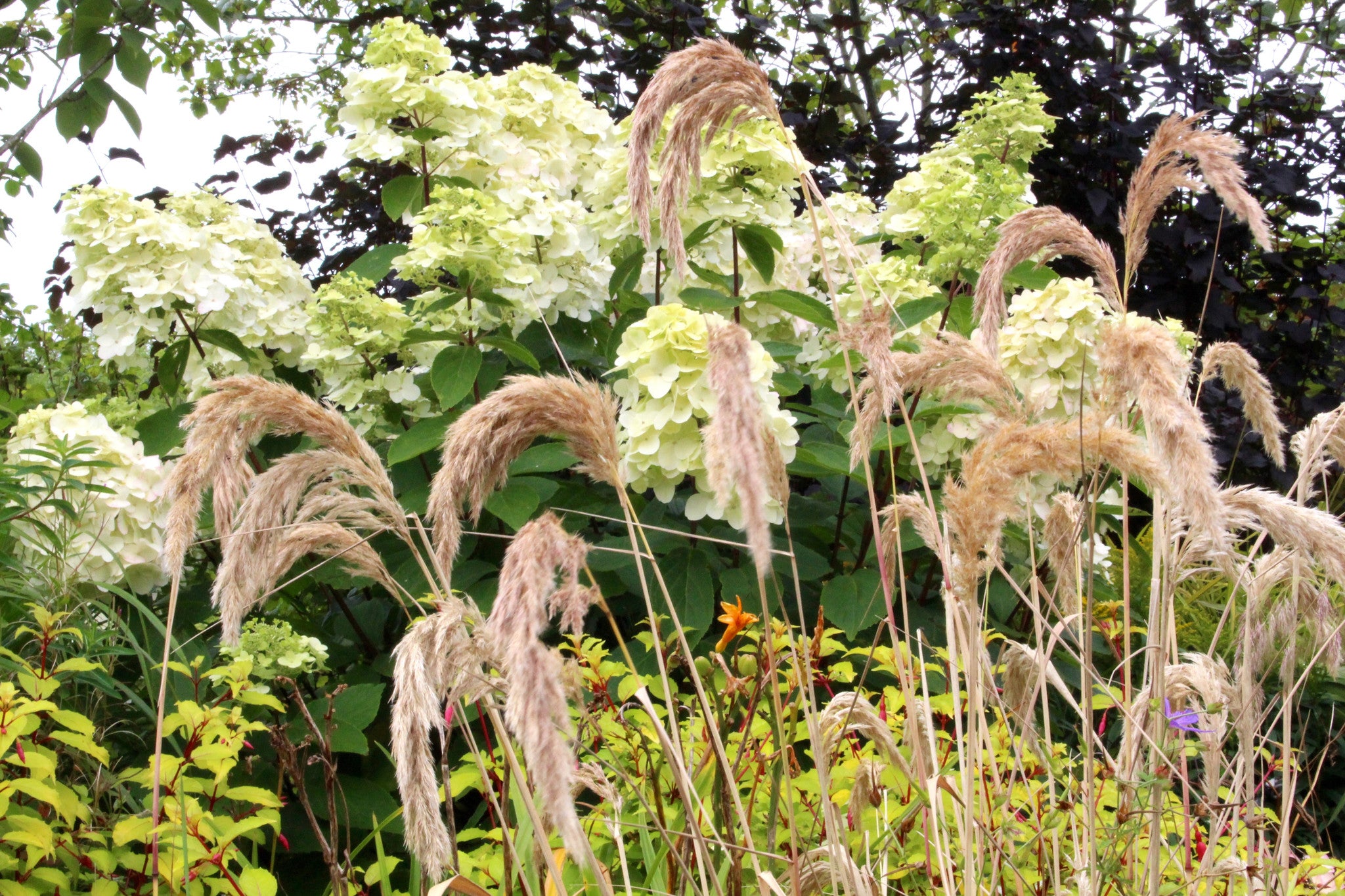Calamagrostis emodensis
Approx. 0.5 litre pot
About this cultivar:
Calamagrostis emodensis, in contrast to other Calamagrostis, has flowers of a weeping in habit. First described by the German botanist August Heinrich Rudolf Grisebach (1814-1879), it gets its name by way of emodi from the W Himalayas, ‘Mount Emodus’. Thus you can guess thus species is native to Pakistan & Northern India.
- Position: Full sun, partial shade
- Soil: Almost any soil, grows well in Ballyrobert!
- Flowers: July, August, September, October, November, December
- Other features: -
- Hardiness: Fully hardy - grows well in Ballyrobert!
- Habit: Clump forming, Tufted
- Foliage: Deciduous
- Height: 90 - 105 cm (3 - 3.5 ft)
- Spread: 45 - 60 cm (1.5 - 2 ft)
- Time to full growth: 2 to 5 years
- Plant type: Herbaceous Perennial, Grass like
- Colour: Yellow, green
-
Goes well with: Echinacea, Achillea, Eryngium, Kniphofia and even Anenome. Also try them on their own!
.
About this genus:
Calamagrostis (small reed or feather reed grass) is a genus in the grass family Poaceae, with about 260 species that occur mainly in temperate regions of the globe. The word "calamagrostis" is derived from the Greek word kalamos (reed) and agrostis (a kind of grass).These beautiful tufted perennials usually have hairless narrow leaves and some may be reed-like. They are very popular with the "Dutch New Wave" or "New Perennial "garden designers such as Piet Oudolf (most notable for the New York Highline) many of the cultivars we see in gardens were actually introduced or popularized by German plantsmen such as George Arends (1862-1952), Karl Foerster (1874-1970) and Ernst Pagels (1913-2007).
But whatever your country or design ethos (if any!) do consider these wonderful plants for your garden. If I had to give you one reason why you should have at least one of these in you garden, it is this: because they look great year-round. Great structure, great colour, great movement. You may read that you should cut them down early. Please don't! Wait until late winter/early spring so you can see frost, morning dew and early evening twilight add a little extra to your garden via these plants!
Another reason to think about Calamgrostis is because they are easy to grow. Most grow anywhere that is not in complete shade or completely waterlogged. They can also be quite slow growing - so won't take over parts of your garden.
Like many grasses, Calamagrostis are versatile, and can be grown alongside almost anything. In our garden at Ballyrobert we like Calamagrostis in full light (even though it tolerates shadier conditions) and beside plants such as Echinacea, Achillea, Eryngium, Kniphofia and even Anenome. Also try them on their own!
Paul's grasses rant: I love grasses and every garden should use them - but not over-use them without thought. I think grasses in the UK and Ireland look best in full-ish light and need careful thought before planting. Why? most grasses need quite a bit of light in order to appreciate their texture and movement - especially in the morning and late evening. Most of the northern European attempts at prairie gardens I have visited are dull in reality (my opinion!). I suspect this is because designers have thought only about plant-grass combinations - not how grasses look in certain lighting situations. Worse still, I suspect many garden designers copy "Dutch Wave" or "New Prairie" gardens from photo books. Almost invariably the photos you see of these gardens are take at perfect angles during fleeting, perfect light conditions at early morning or late evening. Copying these photos often means you are trying to copy the lighting and not the garden design or actual colour. Unfortunately many gardens rarely have perfect light (especially in these islands) - so local gardens that use grasses without careful thought run the risk of looking dull and uninteresting. Ok, rant over - you don't have to listen to me!






